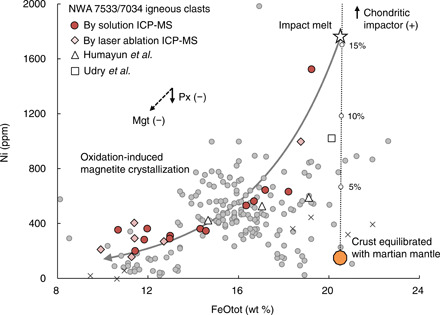Fig. 3. Plot of Ni concentration versus total FeO (FeOtot) for the NWA 7533 igneous clasts.

The primary crust at equilibrium with martian mantle has been assumed to have Ni ≈ 150 ppm and FeOtot ≈ 20.5 wt % at an average MgO content of 8 wt %, based on the Ni versus FeOtot systematics from SNC meteorites (25, 26). High Ni concentrations in the NWA 7034/7533 igneous clasts (data file S2) would require addition of chondritic material with Ni ≈ 10,500 ppm and FeOtot ≈ 21.0 wt % (39). The gray curve represents the incremental effects of Fe-Ti oxide removal (with an assumed partition coefficient of 13 for Ni between magnetite and melt) caused by an oxidation of impact melts due to mixing between the primary crust and a chondritic impactor (shown by the dotted line with 5% increments). The arrows show the controls from fractional crystallization of pyroxene (Px) (the solid arrow) and magnetite (the dashed arrows). Data of the NWA 7533/7034 igneous clasts in Humayun et al. (3) (the triangles) and Udry et al. (27) (the square) and those of rocks and soils in Gusev Crater [the gray dots (21, 22)] and in Gale Crater [the gray crosses (23)] from the APXS on the Spirit and Curiosity Rovers are also shown for comparison.
